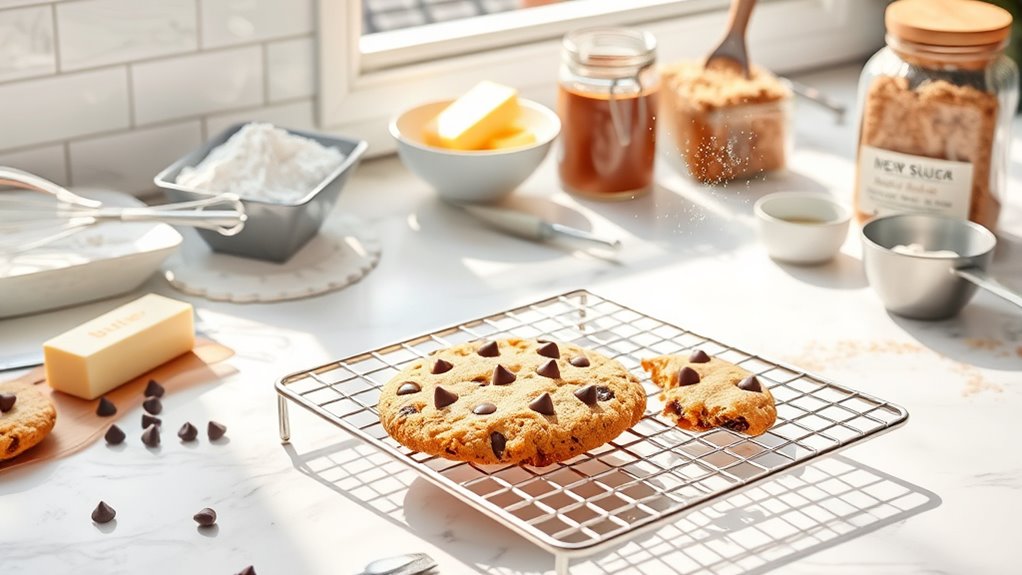To bake soft chocolate chip cookies, start by gathering precise ingredients: room-temperature unsalted butter, brown sugar, all-purpose flour, and semisweet chocolate chips. Cream butter and sugar until fluffy, then add eggs one at a time, mixing well. Sift and gradually fold dry ingredients into the wet mix to avoid overmixing. Portion dough evenly, bake at a steady temperature just until edges set, and serve warm for ideal softness. Keep going to master expert tips and serving ideas.
Ingredients and Quantity
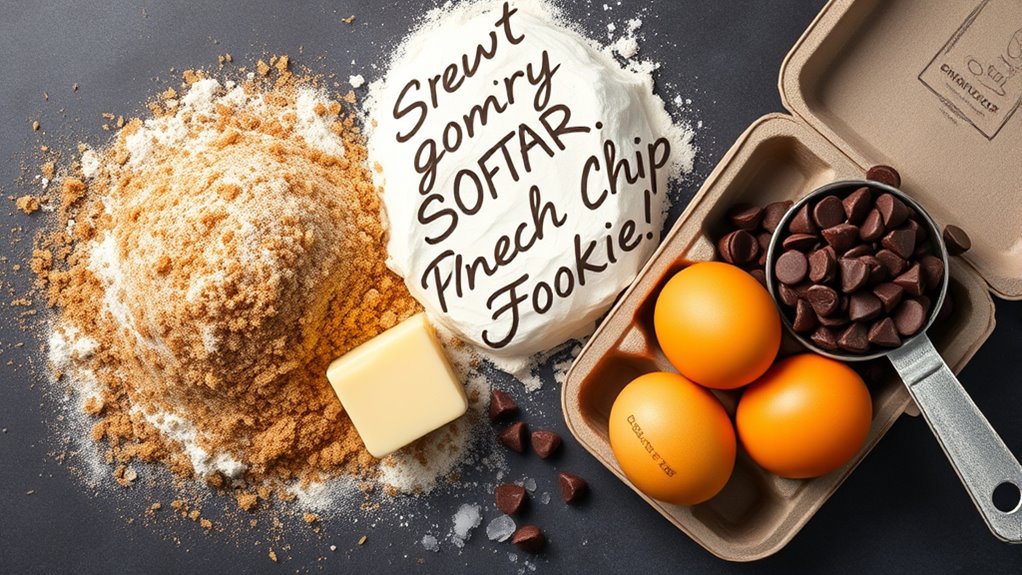
Before you begin, you’ll need to gather specific ingredients in exact quantities to guarantee your soft chocolate chip cookies turn out perfectly tender and flavorful. Selecting ideal chocolate types, such as semisweet and milk chocolate, influences melt and texture. Precise measurements guarantee consistent results aligned with expert baking techniques, maximizing flavor and softness.
| Ingredient | Quantity | Purpose |
|---|---|---|
| All-purpose flour | 2 ¼ cups (280 g) | Structure and tenderness |
| Unsalted butter | 1 cup (227 g) | Fat for moisture and softness |
| Brown sugar | 1 cup (220 g) | Sweetness and chewiness |
| Semisweet chocolate chips | 1 ½ cups (270 g) | Flavor and melt |
Accurate ingredient ratios empower you with freedom to customize texture while mastering technique for perfect cookie softness.
Preparations
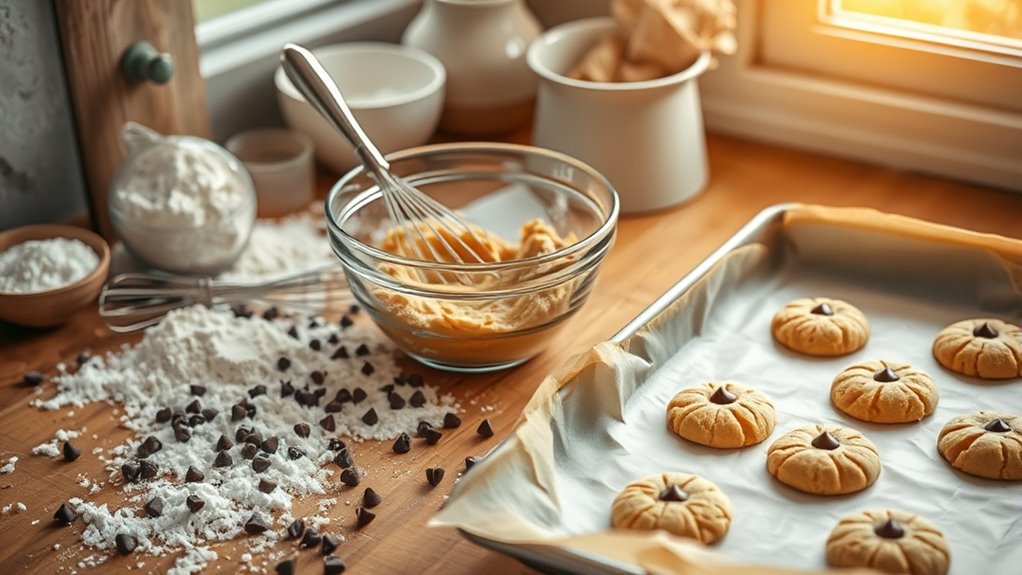
With all ingredients measured accurately, your next step involves specific preparations that set the foundation for ideal dough consistency and baking performance. Begin by ensuring all ingredients are at room temperature; this optimizes emulsification and texture in the cookie dough. Next, prepare your workspace by lining baking sheets with parchment paper or silicone mats to prevent sticking and promote even heat distribution. Preheat your oven precisely to the recommended temperature, as fluctuations can impact spread and softness. Use accurate mixing tools, combining wet and dry ingredients methodically to avoid overmixing, which toughens the dough. Finally, portion dough uniformly using a scoop to guarantee consistent baking times. Mastering these preparations maximizes control over your cookie dough, empowering you to apply advanced baking techniques that yield irresistibly soft, evenly baked chocolate chip cookies every time.
How to Prepare
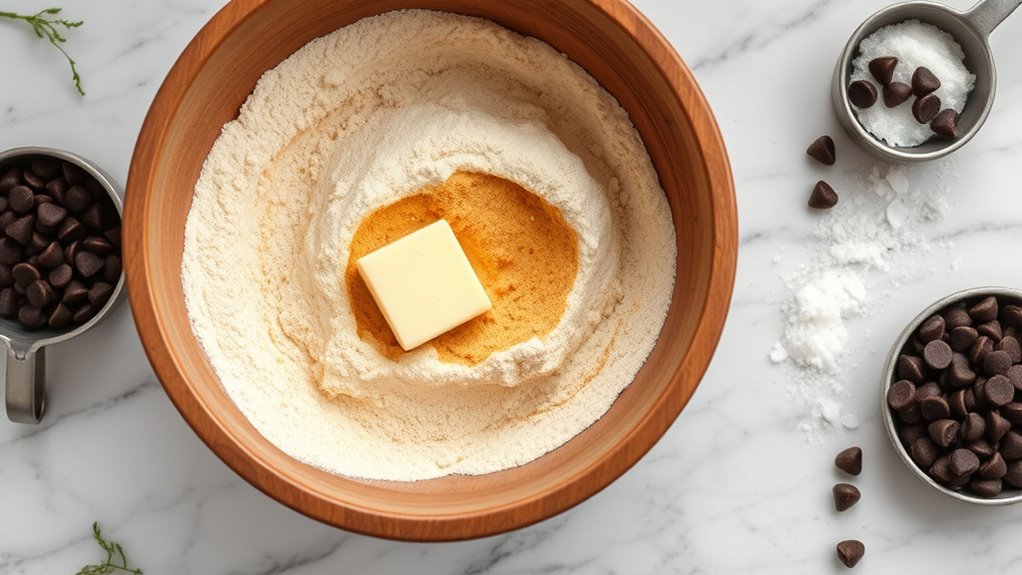
- Cream softened butter and sugars until light and fluffy to incorporate air for a better texture.
- Add eggs one at a time, mixing thoroughly after each addition to maintain emulsion.
- Sift together dry ingredients—flour, baking soda, and salt.
- Gradually fold dry ingredients into the wet mixture to avoid overmixing, which can affect softness.
- Incorporate chocolate chips last to preserve their shape and texture.
- Use proper baking techniques, such as chilling the dough or adjusting mixing speed, to experiment with cookie variations and enhance chewiness or spread.
- Follow this methodical process to ensure consistent results while allowing customization of your soft chocolate chip cookies without compromising structure or flavor.
How to Serve
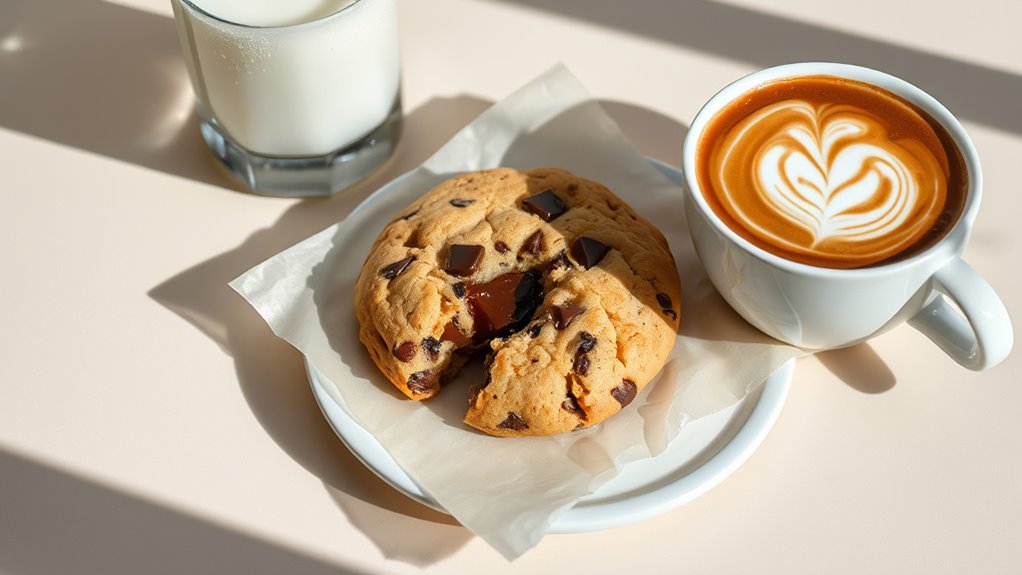
Once you’ve mastered the preparation techniques for soft chocolate chip cookies, serving them properly can enhance their texture and flavor experience. Serve cookies slightly warm to maintain that soft, chewy center and maximize chocolate melt. Use parchment or wax paper-lined plates to prevent sticking and preserve the cookie’s surface. For serving suggestions, pair your cookies with a cold glass of milk or a robust cup of coffee, which balance sweetness and complement the rich chocolate. Consider cookie accompaniments like vanilla ice cream or a drizzle of caramel sauce for an elevated treat. If you’re offering multiple flavors, arrange cookies by type to allow clear selection. By controlling temperature and selecting appropriate accompaniments, you guarantee every bite delivers the intended soft texture and rich flavor.
Tips
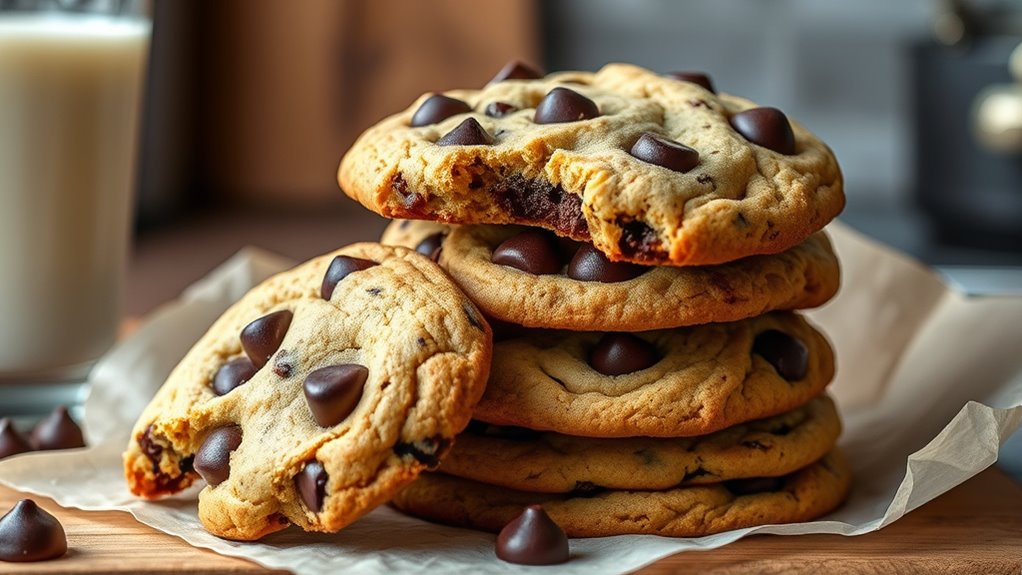
If you want consistently soft chocolate chip cookies, controlling ingredient temperatures and mixing techniques is essential. Always use room-temperature butter and eggs; cold ingredients hinder proper creaming, affecting texture. Cream butter and sugar until light and fluffy to incorporate air, which yields softness. Avoid overmixing once you add flour—overdeveloped gluten toughens cookies. For cookie variations, consider substituting part of the all-purpose flour with cake flour for a tender crumb or adding oats for chewiness. Adjust baking time precisely; underbaking by one to two minutes keeps centers soft, but watch closely to prevent raw dough. Using baking soda promotes spread and softness, while baking powder yields a more cakey texture. By mastering these baking techniques, you maintain control over your cookie’s softness and can confidently experiment with variations to suit your freedom in the kitchen.
Food Value and Benefit
Chocolate chip cookies, when prepared thoughtfully, offer a balance of indulgence and nutritional value. The overall food value depends largely on the quality of ingredients used. Using high-grade butter, dark chocolate, and whole wheat flour can enhance the nutritional profile of this classic treat.
Food Value of Prepared Chocolate Chip Cookies:
- Provide a source of energy through carbohydrates and fats
- Contain beneficial fats from quality butter and dark chocolate
- Supply dietary fiber when made with whole wheat flour
- Offer antioxidants from dark chocolate
Benefits of Eating This Recipe:
- Supports heart health due to antioxidants in dark chocolate
- Provides essential minerals such as magnesium, iron, and zinc from cocoa and whole wheat flour
- Contains vitamin E and vitamin B-complex from butter and whole wheat flour
- Offers dietary fiber which aids in digestion and promotes satiety
- Supplies quick energy from natural sugars and complex carbohydrates
